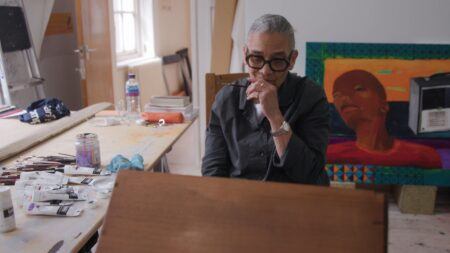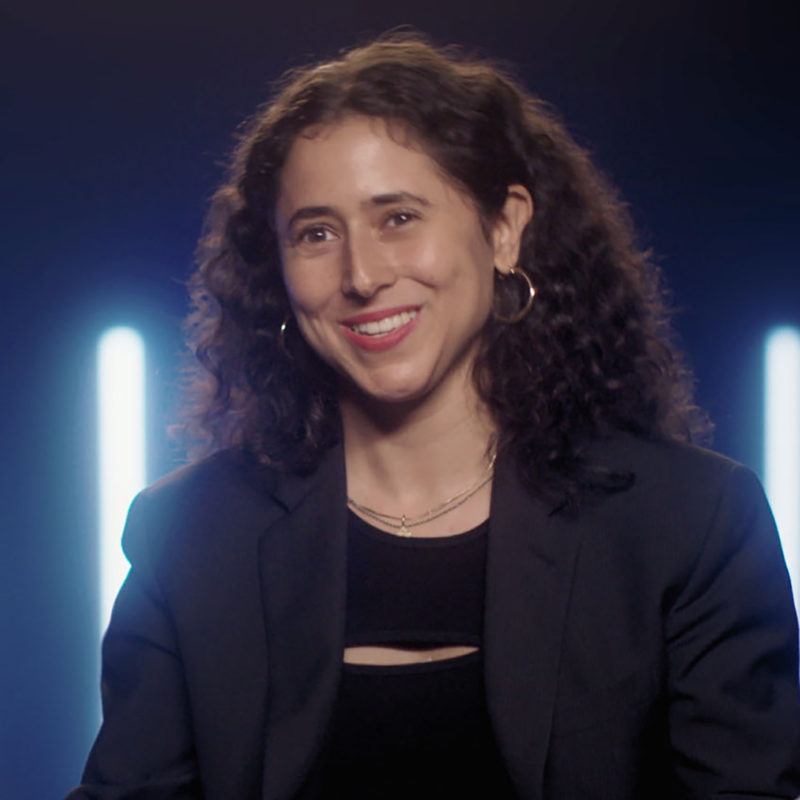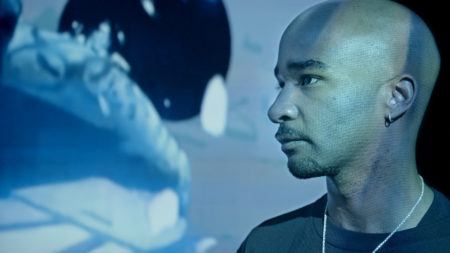Continue playing
(Time remaining: )
Play from beginning
Continue playing "{{ controller.videos[controller.getVideo(controller.currentVideo)].segmentParentTitle}}"
{{controller.videos[controller.getVideo(controller.currentVideo)].title}} has ended.
In Between LanguagesMeriem Bennani
Visit our Awards page for this film’s honors and recognition.
What if one language just isn’t enough? At work installing her solo exhibition at CLEARING gallery in Brooklyn, artist Meriem Bennani chronicles a recent set of ambitious video installation works, unpacking her uniquely humorous and political mix of digital animation, documentary footage, and interactive sculpture. Originally from Morocco, New York City-based Bennani explains how “being here for ten years and being English [as a] second language, and feeling like I’m losing a little bit of my first language…I’ve found that developing this practice that pulls from so many different languages of TV, cinema, sculpture and installation, mixing it all together has allowed me to hit the right note, in my own way.”
For her 2019 Whitney Biennial work, MISSION TEENS (2019), Bennani filmed a group of French-speaking teenagers at her former high school in Rabat, Morocco as well as the grand homes of Rabat’s middle and upper class. Bennani in turn mischievously complicates the postcolonial politics of her work by placing the films in a series of “viewing stations,” absurdist and exocticized sculptures like a palm tree oasis on the Whitney’s outdoor terrace. The viewer is not only forced to sit and peer inside the sculptures but must also coexist and cooperate with other viewers in order to watch the films.
Back at CLEARING gallery, Bennani’s eight-channel video installation, Party on the CAPS (2018–2019), imagines a fictional future where immigrants are isolated to an island in the middle of the Atlantic Ocean and begin new, hybridized societies. Like her own playfully mixed work, “the whole island of the CAPS is a physical analogy for the idea of diaspora, how people think of diasporas as either having to fully assimilate or return to the land they come from,” says Bennani. “But that actually there’s a third alternative, which is in that in-between.”
Credits
Series Producer: Nick Ravich. Directors: Danielle Brock and Nick Ravich. Editor: Rosie Walunas. Additional Editor: Misha Spivack. Cinematography: Jarred Alterman, Mason Cash, and Souki Mehdaoui. Additional Camera: Logan Quarles and Brian Wengrofsky. Grip: George Schramm. Sound: Trokon Ngabe and Jeff Seelye. Production Assistants: Meghan Garvey, Alex Hass, Eda Li, and Lucy Moloney. Color Correction: Jerome Thélia. Sound Design & Mix: Gisela Fullà-Silvestre. Design & Graphics: Chips. DIT & Assistant Editor: Jasmine Cannon. Artwork Courtesy: Meriem Bennani. Thanks: Ife Adelona, Lauren Barnett, Max Bushman, CLEARING, Cut + Measure, Laurence Dujardyn, Alex Laviola, Emma Nordin, Red Hook Post, Melissa Saenz Gordon, Lumi Tan, The Kitchen, Whitney Museum of American Art, YouTube Space NY, and David Zaltsman.
New York Close Up is supported by The Andy Warhol Foundation for the Arts; and, in part, by public funds from the New York City Department of Cultural Affairs in partnership with the City Council, and by individual contributors.
Closed captionsAvailable in English, German, Romanian, Italian, Japanese, Korean, Chinese, Italian
Through the Art21 Translation Project, multilingual audiences from around the globe can contribute translations, making Art21 films more accessible worldwide. Translate this video now.
Interested in showing this film in an exhibition or public screening? To license this video please visit Licensing & Reproduction.
Meriem Bennani was born in 1988, in Rabat, Morocco and today lives and works in New York City, New York. Bennani received her BFA from The Cooper Union in 2012 after receiving her MFA in Animation from the Ecole Nationale Supérieure des Arts Décoratifs in Paris, France in 2011. Moving between the aesthetics of reality television, documentary, animation and more, Bennani’s videos and installations embrace play and the absurd, while contemplating the intricacies of human behavior.
“I’ve always been in between languages.
I found that developing this practice that pulls from so many different languages, mixing it all together has allowed me to hit the right note, in my own way.”
Meriem Bennani




